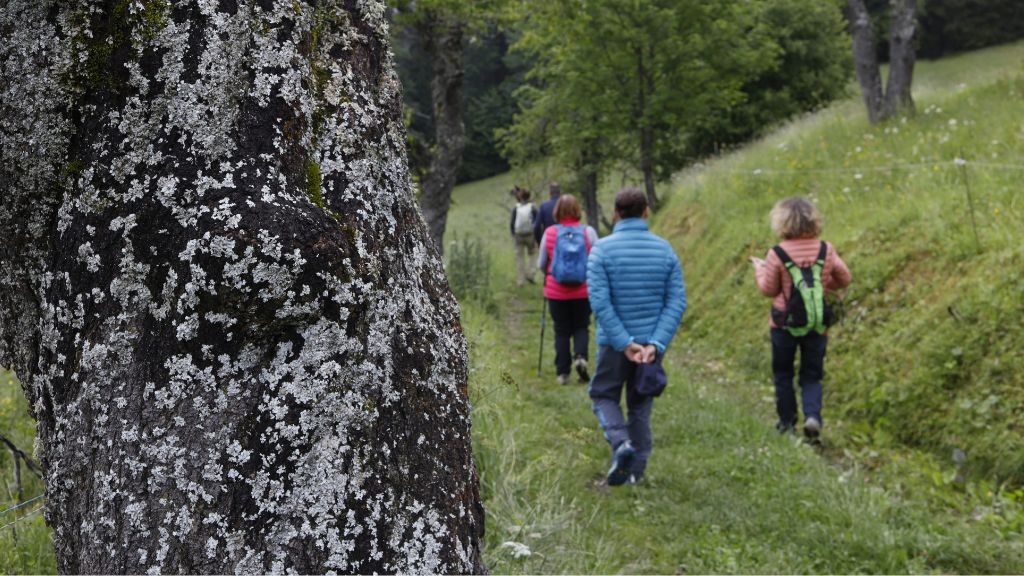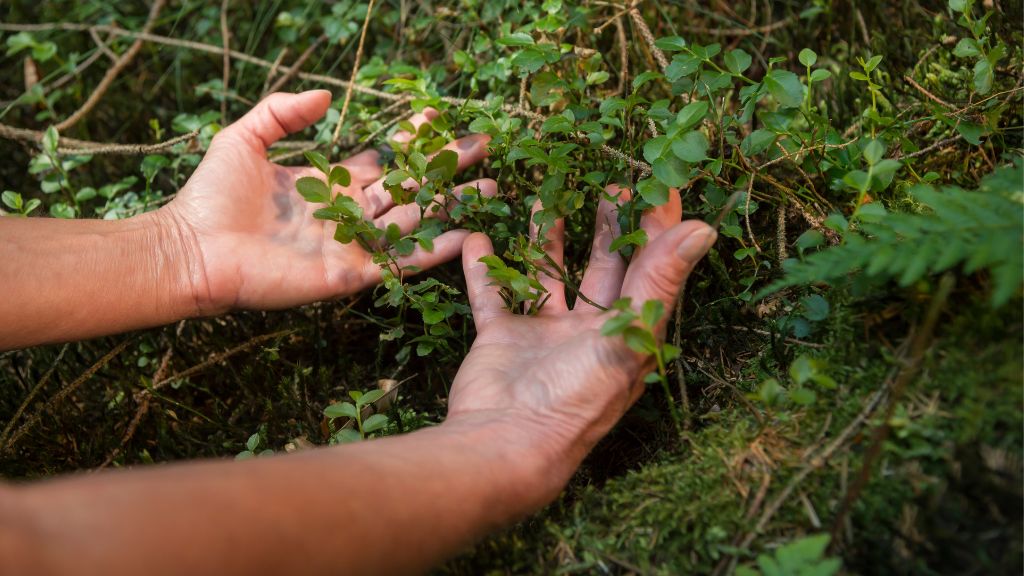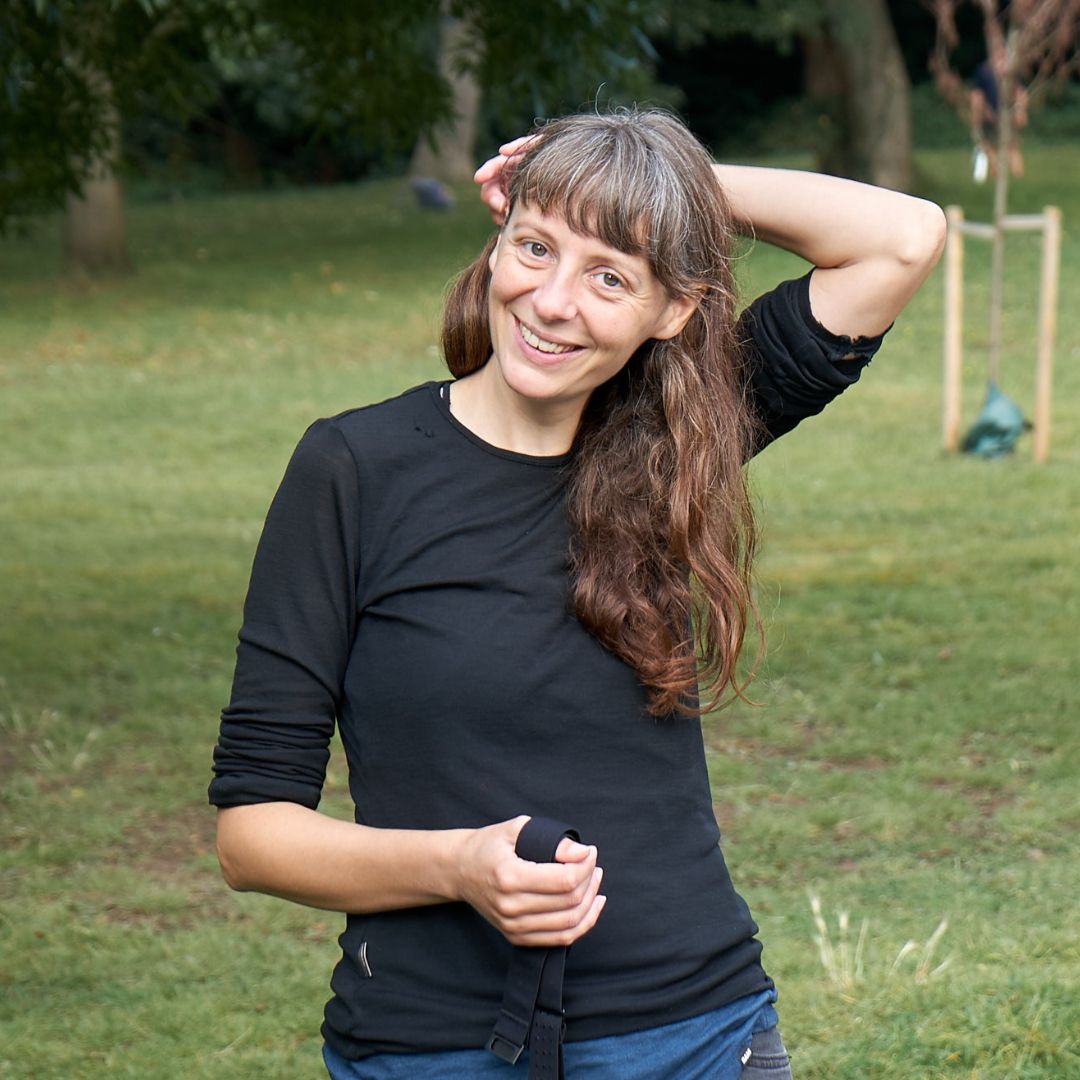What is forest bathing?
Forest bathing is a mindful, meditative practice.

Forest bathing, or shinrin-yoku in Japanese, means to soak in the forest through all of your senses. In practice, forest bathing can be a slow, mindful walk in nature, where you pay close attention to your surroundings using your senses (e.g. sight, smell, hearing, touch). There is no destination or goal, other than to notice and appreciate your surroundings.
Forest bathing, which originated in Japan in the 1980s, can be practiced alone. However, it is often helpful to try the first few times with a guide who can suggest new ways of enhancing your senses and prompt you to notice your surroundings.
Related: What is mental health?
What does forest bathing look like?
Forest bathing involves using your senses to notice your surroundings. For example, this may include noticing the different colors and patterns of leaves; noticing movement in the tree canopy or on the surface of water; viewing a natural scene or finding a "sit spot" from which to observe nature; smelling fallen leaves and soil; listening to the sound of the wind through the trees, running water or bird song; or noticing textures by touching bark, leaves and moss.
Although most of the walk is conducted in silence so that you can pay full attention to your surroundings, a guide can offer opportunities to share the interesting things you notice. Other people’s observations can also inspire you to look for new things, such as the fallen leaf that smelled like cinnamon, for instance.
Often the guide ends the session by inviting people to spend time with a preferred tree or a view or by leading a mindfulness activity that involves noticing your surroundings through all the senses in turn. (Broadly speaking, "mindfulness" refers to the act of bringing your attention to what you're doing in the present moment.)
Some guides end the session by offering a foraged tea to experience the sense of taste in the forest.
Get the world’s most fascinating discoveries delivered straight to your inbox.
How is forest bathing different from a typical walk in nature?

Even for those who already love the outdoors, forest bathing often differs dramatically from their usual experience of being in nature.
On a typical nature walk, you might be moving quickly to cover distance, chatting with a friend, walking the dog, listening to music, checking your phone or simply being distracted by your thoughts. In contrast, in a guided forest bathing session, the guide plans a route that provides opportunities to notice nature using all the senses, sets a slower pace and provides prompts to keep you in your senses rather than inside your busy head. The guide will suggest different ways to enhance our senses to help you notice the small details of your surroundings that you would normally miss on a typical walk.
Origins of forest bathing
Forest bathing originated in Japan, where the practice is called shinrin-yoku. The translation into English is "forest bathing," and a bit like the term "sun bathing," the idea is that you "bathe" in the atmosphere of the forest by noticing your surroundings and breathing in the oxygen and wood oils let off by the trees.
Japan has a long cultural history of valuing nature through Shintoism, a religion that centers around the idea that divine spirits or "kami" are manifested in everything in nature, taking the form of the trees, rocks, mountains, sea and animals, according to the Asia Society.
In the 1980s, when the Japanese government realized they had a problem with stressed workers who were experiencing too much screen-time — or "techno-stress" — the government invested in forest bathing as a solution, protecting woodland and establishing 62 forest bathing clinics. Forest bathing became available on prescription, so when patients visit their doctor because of stress or high blood pressure, they may be given the option to take medication or try forest bathing, according to "Shinrin Yoku: The Japanese Art of Forest Bathing" (Li, 2018).
Benefits of forest bathing

Since 2004, the Japanese government has invested $4.3 million in 62 clinics offering forest bathing as a public health treatment, according to "Shinrin Yoku: The Japanese Art of Forest Bathing." The science about the benefits of forest bathing came later with Japanese researchers such as Qing Li and Yoshifumi Miyazaki leading the way in proving what people intuitively knew: that spending time in nature is good for you.
So far, research has shown that forest bathing can improve several aspects of a person's health. For example, research published in February 2021 in the International Journal of Environmental Research and Public Health showed a decrease in systolic blood pressure after 12 healthy volunteers practiced forest bathing for a two-hour stint. In a research article published in October 2018 in the journal Frontiers in Public Health, scientists showed improvements in heart rate variability — a measure of cardiovascular health — in 485 male participants while walking in a forest for just 15 minutes.
Research published in February 2018 in the journal Biomedical and Environmental Sciences, found reduced biomarkers of chronic heart failure, inflammation and oxidative stress in elderly chronic heart failure patients after they participated in two four-day forest bathing trips. Researchers also found that a five-day forest trip improved immune system health, as indicated by an increase in natural killer cells, which are part of the body's defence against cancer, they reported in March 2018 in the journal Oncotarget.
Research has also found that forest bathing offers psychological benefits. In a review of 20 research studies published July 2022 in the International Journal of Mental Health and Addiction, researchers found consistent improvements in mood, especially anxiety, following forest bathing sessions. In January 2021 researchers published an article in the journal Sustainability, revealing reductions in anxiety and rumination about problems, and increases in social connection and prosocial values such as feeling compassion for others in 61 volunteers, after two hours of forest bathing.
How does it work and what's the dose?
In researcher Li’s book "Shinrin-Yoku: The Art and Science of Forest Bathing," he describes how 50% of the benefit of forest bathing comes from breathing in the essential oils given out by evergreen trees. His research suggests that forest bathing for two hours daily and breathing in the wood oils, known as phytoncides, is linked to an increase in the number and activity of natural killer cells in the body. This research led to guidance about the correct "dose" of forest bathing: at least two hours every month.
(Different tree species produce different phytoncides, and more research is needed to understand whether trees native to different regions of the world offer specific benefits, according to the New York State Department of Environmental Conservation.)
Research published in the journal Scientific Reports in 2019 found that spending two hours in nature per week produces the greatest noticeable improvements in well-being, measured as a change in self-reported health and well-being. However, don’t worry if you can’t spend two hours in one go forest bathing, because the same study found that shorter visits to nature — as short as 20 minutes per day adding up to two hours per week — were still really beneficial to a person's health and well-being.
According to research published in the International Journal of Environmental Research and Public Health in 2021, levels of the stress hormone cortisol typically decrease in people's blood after just 15 minutes of forest bathing. And there are many forest bathing guides who notice it takes about 20 minutes for people to slow down, relax and connect with their surroundings during a session, so give yourself at least 20 minutes each day to connect with nature in your garden, local park, forest or any other type of natural environment that appeals to you.
Where can I find forest bathing guides near me?
Forest bathing guides can offer in-person forest bathing walks or if you are currently experiencing low energy or limited mobility, some guides offer online forest bathing experiences.
You can find a trained guide near you by using the certified guide maps on the Association of Nature and Forest Therapy website and Forest Therapy Hub website.
For forest bathing in New York City, check out the New York Botanical Garden in the Bronx.
For forest bathing across Washington DC, perhaps try a guided walk with naturalist and author Melanie Choukas-Bradley.
You can also search MeetUp.com or EventBrite.com to find guides near you.
For those with low energy or limited mobility there are online forest bathing sessions.
If you’d rather try forest bathing on your own, there are audio and visual guides to get you started.
Bibliography
Jones, R., Tarter, R., Ross, A.M. (2021). Greenspace Interventions, Stress and Cortisol: A Scoping Review. International Journal of Environmental Research and Public Health, 18(6):2802. https://doi.org/10.3390/ijerph18062802
Kobayashi, H., Song, C., Ikei, H., Park, B-J., Lee, J., Kagawa, T., Miyazaki (2018). Forest Walking Affects Autonomic Nervous Activity: A Population-Based Study. Frontiers in Public Health, 6, https://doi.org/10.3389/fpubh.2018.00278
Kotera, Y., Richardson, M. & Sheffield, D. (2022). Effects of Shinrin-Yoku (Forest Bathing) and Nature Therapy on Mental Health: a Systematic Review and Meta-analysis. International Journal of Mental Health and Addiction, 20, 337–361. https://doi.org/10.1007/s11469-020-00363-4
Li, Q. (2018). Shinrin-Yoku: The Art and Science of Forest Bathing’. Penguin Life. (ISBN13: 9780241346952)
Mao, G.X., Cao, Y.B., Yang, Y., Chen, Z.M., Dong, J.H., Chen, S.S., Wu, Q., Lyu, X.L., Jia, B.B. Yan, J., Wang, G.F. (2018). Additive Benefits of Twice Forest Bathing Trips in Elderly Patients with Chronic Heart Failure, Biomedical and Environmental Sciences, 31,2, 159-162. https://doi.org/10.3967/bes2018.020
McEwan, K., Giles, D., Clarke, F.J., Kotera, Y., Evans, G., Terebenina, O., Minou, L., Teeling, C., Basran, J., Wood, W., Weil, D. (2021). A Pragmatic Controlled Trial of Forest Bathing Compared with Compassionate Mind Training in the UK: Impacts on Self-Reported Wellbeing and Heart Rate Variability. Sustainability. 13(3):1380. https://doi.org/10.3390/su13031380
Miyazaki, H. (2018). Shinrin-yoku: the Japanese way of forest bathing for health and relaxation. Aster. (ISBN13: 1912023512)
NYS Dept. of Environmental Conservation. (n.d.). Immerse yourself in a forest for Better Health. Immerse Yourself in a Forest for Better Health . Retrieved June 24, 2022, from https://www.dec.ny.gov/lands/90720.html
Peterfalvi, A., Meggyes, M., Makszin, L., Farkas, N., Miko, E., Miseta, A., Szereday, L. (2021). Forest Bathing Always Makes Sense: Blood Pressure-Lowering and Immune System-Balancing Effects in Late Spring and Winter in Central Europe. International Journal of Environmental Research and Public Health, 18(4):2067. https://doi.org/10.3390/ijerph18042067
Tsao, T., Tsai, M., Hwang, J., Cheng, W., Wu, C., Chou, C., Su, T. (2018). Health effects of a forest environment on natural killer cells in humans: an observational pilot study. Oncotarget, 9, 16501-16511. https://doi.org/10.18632/oncotarget.24741
White, M.P., Alcock, I., Grellier, J., Wheeler, B.W., Hartig, T., Warber, S.L., Bone, A., Depledge, M.H., Fleming, L.E. (2019). Spending at least 120 minutes a week in nature is associated with good health and wellbeing. Science Reports, 9, 7730. https://doi.org/10.1038/s41598-019-44097-3
This article is for informational purposes only, and is not meant to offer medical advice.
Originally published on Live Science.

Kirsten McEwan is a research psychologist and associate professor of health and wellbeing at the University of Derby in the U.K. She is happiest spending time in nature and unites her passion for the outdoors with health and wellbeing research as a forest bathing researcher and practitioner. For the last 20 years, she has worked in hospitals and universities evaluating the effectiveness of health and well-being treatments. Most of her research has centered on talk therapies for mental health, such as Compassion-Focused Therapy. Her current research largely focuses on evaluating the effectiveness of forest bathing and making it accessible to a wider swath of the population.


